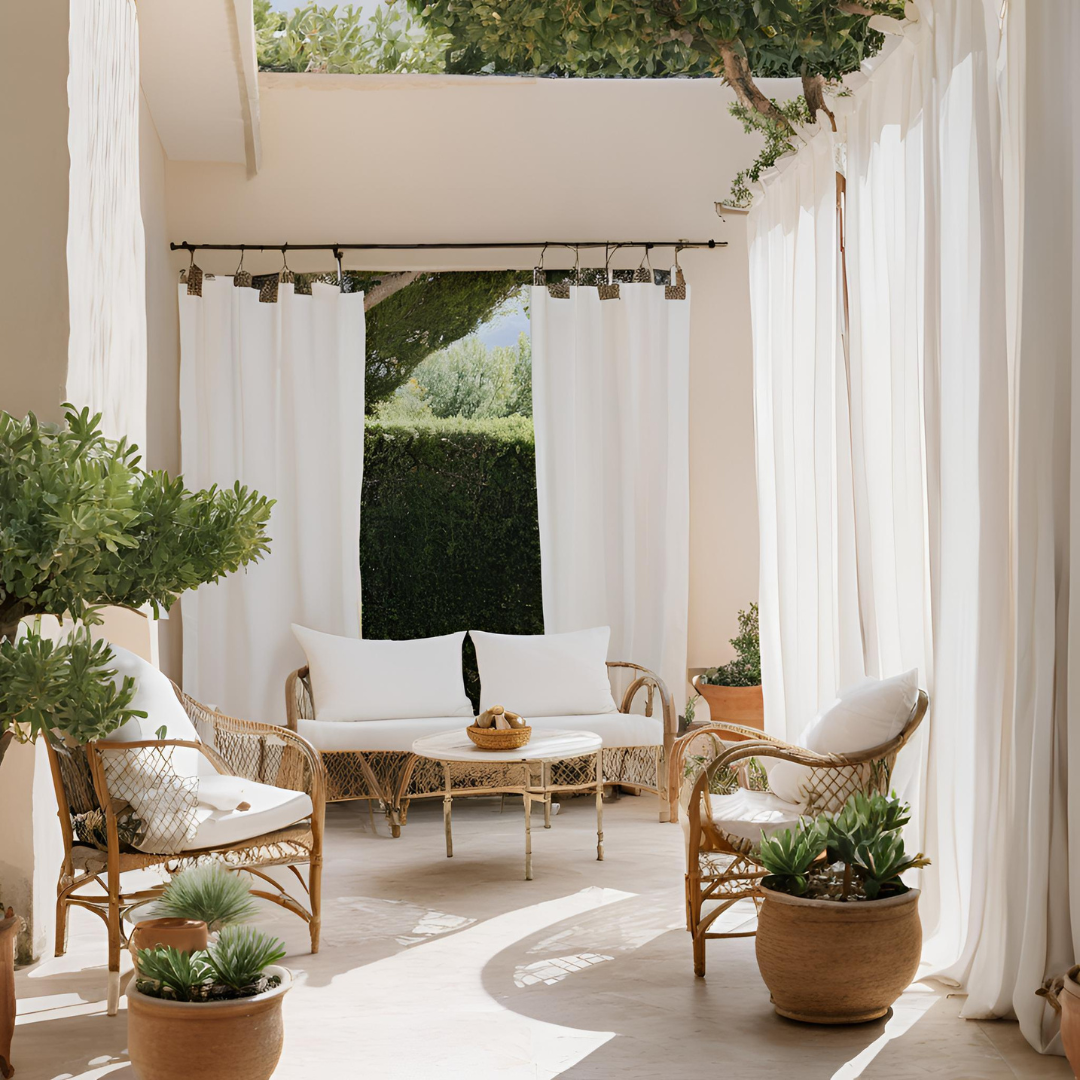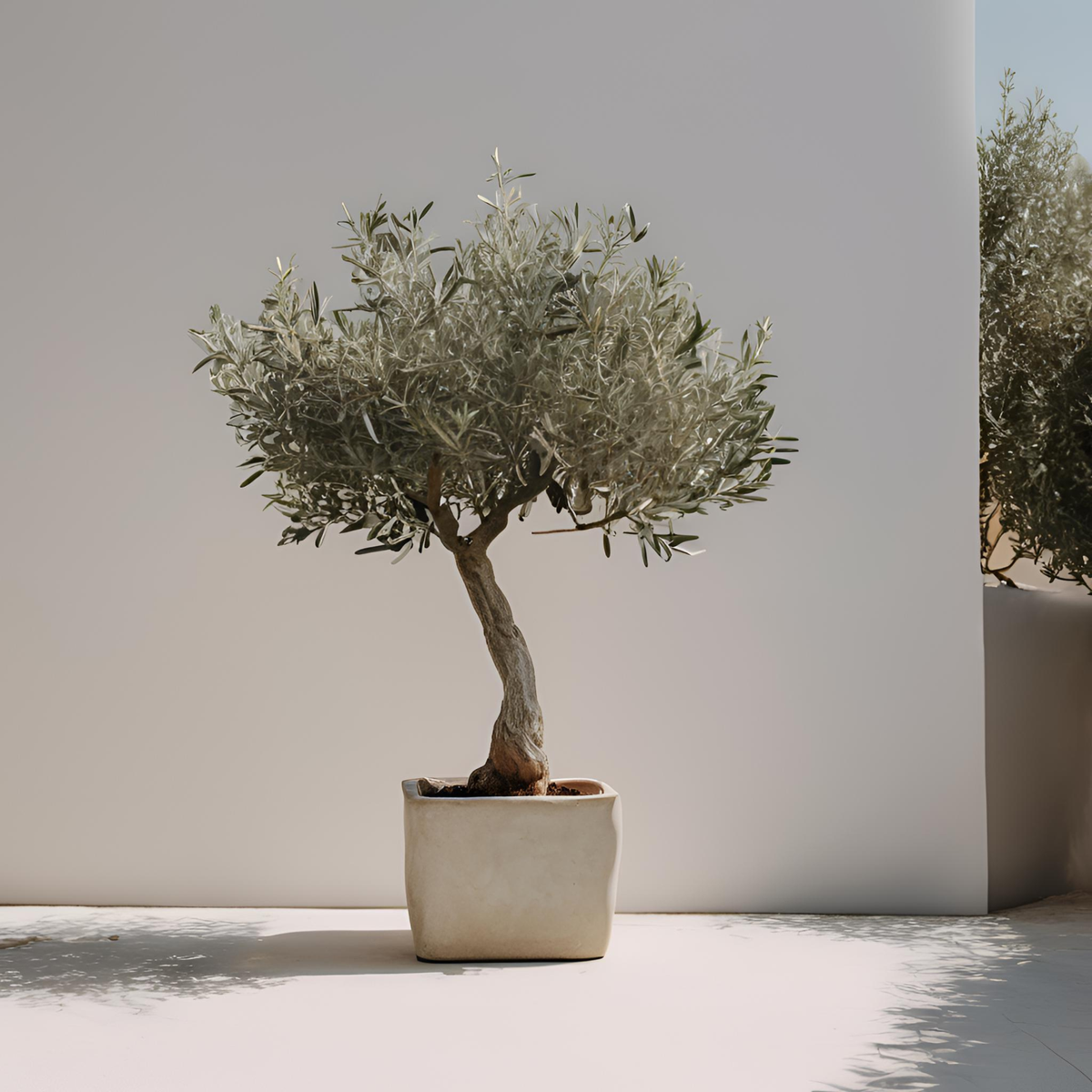9 Authentic Tree Ideas for your Mediterranean Garden

From the bright citrus tones of lemon and mandarin trees to the sculptural forms of cypress and stone pines, these nine Mediterranean tree icons will bring depth, fragrance, and timeless charm to your garden.
Idea #1: The Lemon Tree
Originally from Asia, the lemon tree found its way to Southern Europe through ancient trade routes and has been thriving under the Riviera sun ever since. These trees are more than just fruit producers—they are aesthetic statements bringing a touch of sunshine and luxury to any outdoor space.
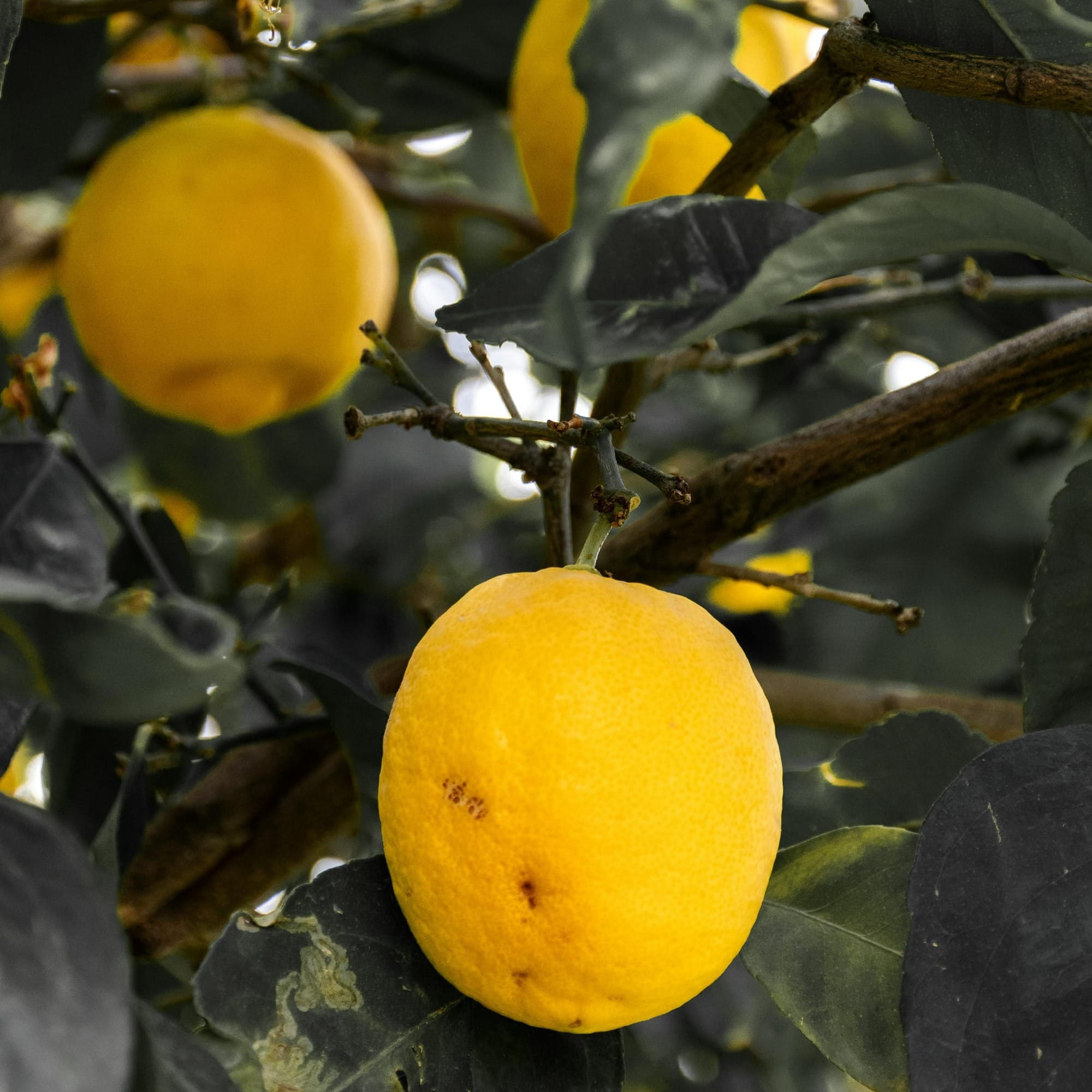
Care Advice:
Lemon trees love the warmth and sunlight, so if you’re thinking of planting one, make sure it gets at least 6-8 hours of direct sunlight per day. They thrive in well-draining soil, and while they do enjoy moisture, they don’t appreciate wet feet—so be mindful not to overwater. If you live in a cooler climate, consider growing it in a large pot so you can bring it inside during the winter.
Expect your lemon tree to grow between 2 to 6 meters, depending on whether it’s potted or planted in the ground.
Cost
Young potted trees start at €30–€50. Mature, fruit-bearing trees can cost €100–€300, depending on size and variety.
Idea #2: The Mandarine Tree
Originally from China, the Mandarine Tree made its way to the Mediterranean in the early 19th century and quickly became a favorite in gardens along the French and Italian Rivieras. Unlike other citrus trees, mandarins are compact, lush, and effortlessly elegant, producing small, fragrant fruits that add a pop of color to any outdoor space.
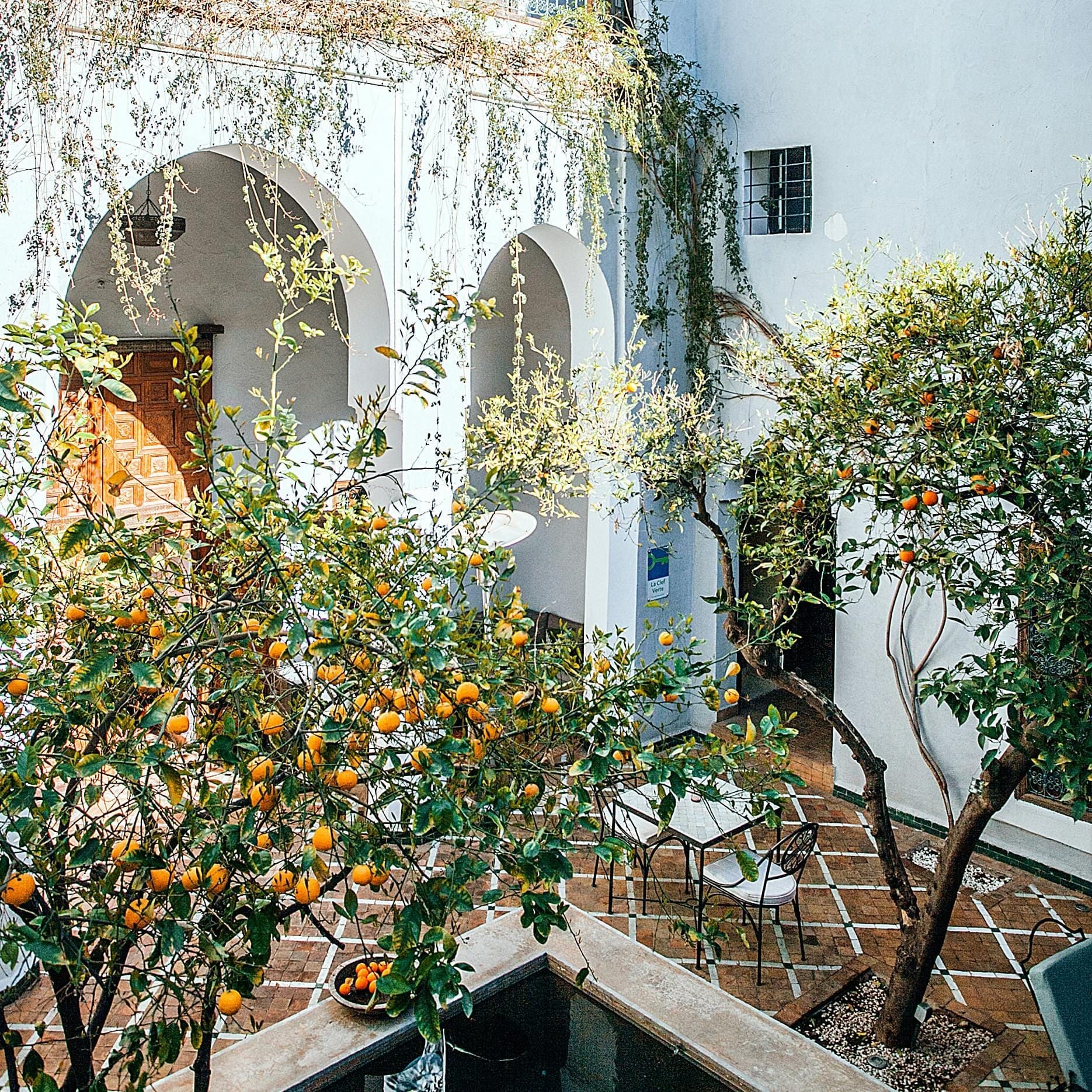
Care Advice
If you want a mandarin tree to thrive, give it plenty of sun—at least 6 hours of direct light daily. It prefers well-draining, slightly acidic soil and needs regular watering, but be careful not to overdo it. Mandarins are more cold-resistant than lemons, tolerating temperatures down to -5°C, but if you live in a colder climate, a potted mandarin can easily be moved indoors for winter.
Cost
A mandarin tree typically costs between €40–€80 for a young plant, while more mature specimens range from €150–€400.
Idea #3: The Cypress Tree
Cypress trees have always been a symbol of elegance, endurance, and tranquility, often found lining grand driveways, framing hilltop villages, or standing guard over picturesque vineyards. Their vertical, columnar shape creates a dramatic effect, making them a favorite for anyone looking to add a touch of Mediterranean sophistication to their garden.
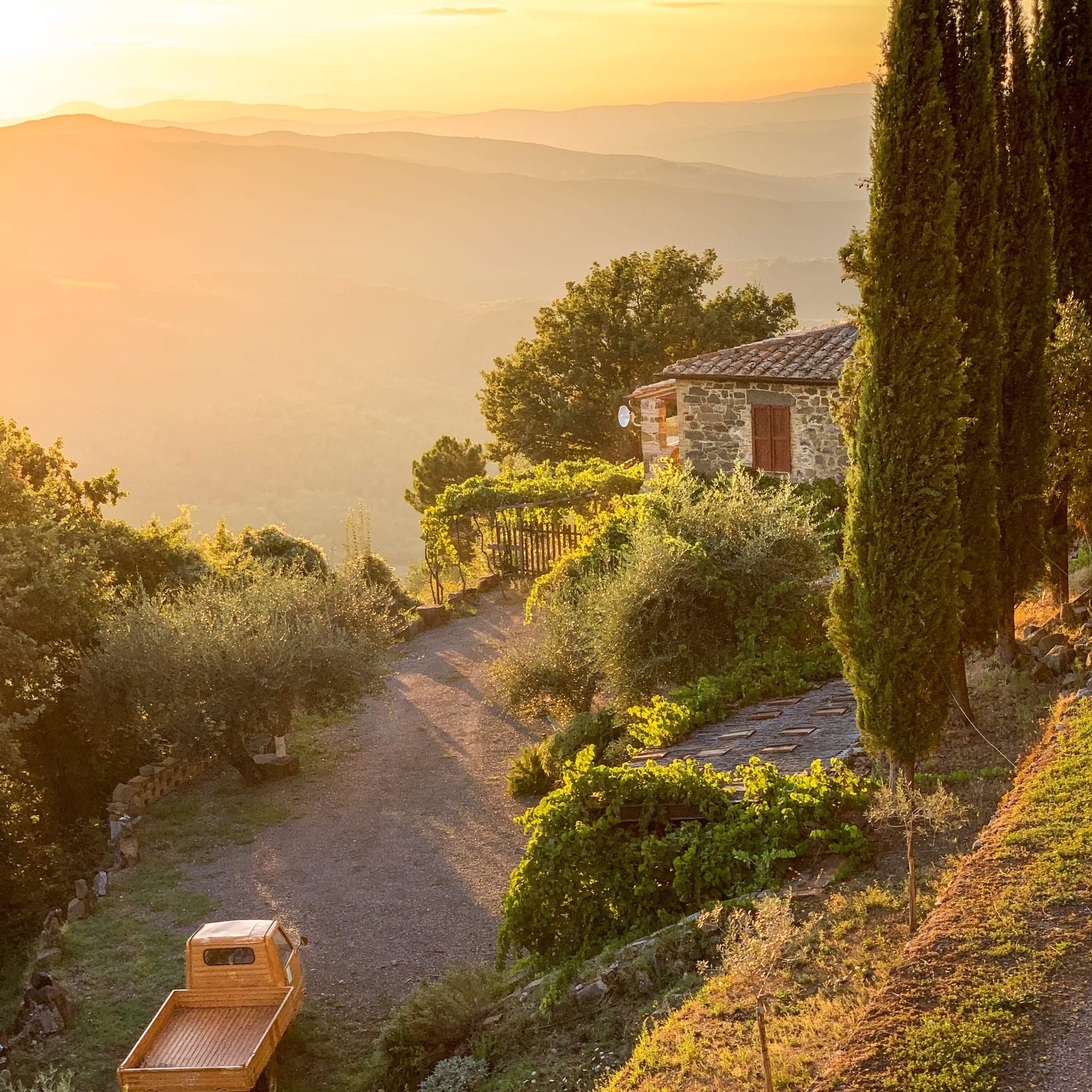
Care Advice
Cypress trees are hardy, drought-resistant, and low-maintenance. They thrive in full sun, requiring at least 6 hours of sunlight per day, and prefer well-drained soil to avoid root rot. Once established, they need minimal watering.
It is important to regularly prune this tree to maintain a more compact, tailored look.
Cost
Cypress trees are affordable and widely available, with young trees costing €20–€50, while taller, well-established ones can go up to €200+, especially for architectural, columnar varieties.
Idea #4: The Olive Tree
Olive trees have been cultivated since ancient times, symbolizing peace, prosperity, and longevity. Beyond their agricultural importance, olive trees are a design statement—a single, sculptural tree can instantly elevate a garden or terrace with its twisted trunk and delicate, shimmering leaves.
Care Advice
Olive trees love full sun, needing at least 6-8 hours of direct light per day, and require well-draining, sandy or rocky soil. Compact varieties can be grown in pots and brought indoors during winter.
The best part? Olive trees can live hundreds, even thousands of years—so planting one is like leaving a legacy.
Cost
Olive trees come in a wide price range, depending on age and size. A small potted tree starts at €30–€70, while mature, gnarled specimens (especially centuries-old ones) can easily exceed €1,000–€3,000 for a statement piece.
Idea #5: The Mimosa Tree
The mimosa tree is one of the most glamorous and poetic trees of the French Riviera. Originally from Australia, it was introduced to the Mediterranean in the 19th century and quickly became a signature tree along the Côte d’Azur, especially in places like Menton and Mandelieu-la-Napoule, where entire festivals celebrate its golden blooms.

Care Advice
Mimosa trees thrive in full sun and prefer well-draining, sandy soil—they love the coastal climate but can also adapt to warmer inland areas. They are fast-growing, reaching between 4 to 10 meters, and require occasional pruning to maintain their elegant shape.
Another thing to note—while stunning, mimosa trees can be invasive in some areas, so be mindful of where you plant them.
Cost
Mimosa trees are affordable, with young plants starting at €30–€60. Larger, ready-to-bloom trees can go for €100–€300, depending on their height. They grow fast, so investing in a smaller tree can be a cost-effective option.
Idea #6: The Stone Pine
The stone pine is one of the most iconic trees of the Mediterranean. Its wide, flat canopy instantly evokes the landscapes of Provence, Tuscany, and the French Riviera, where these majestic trees dot the coastline and countryside. With a history dating back over 2,000 years, stone pines were cultivated by the Romans for their delicious pine nuts.
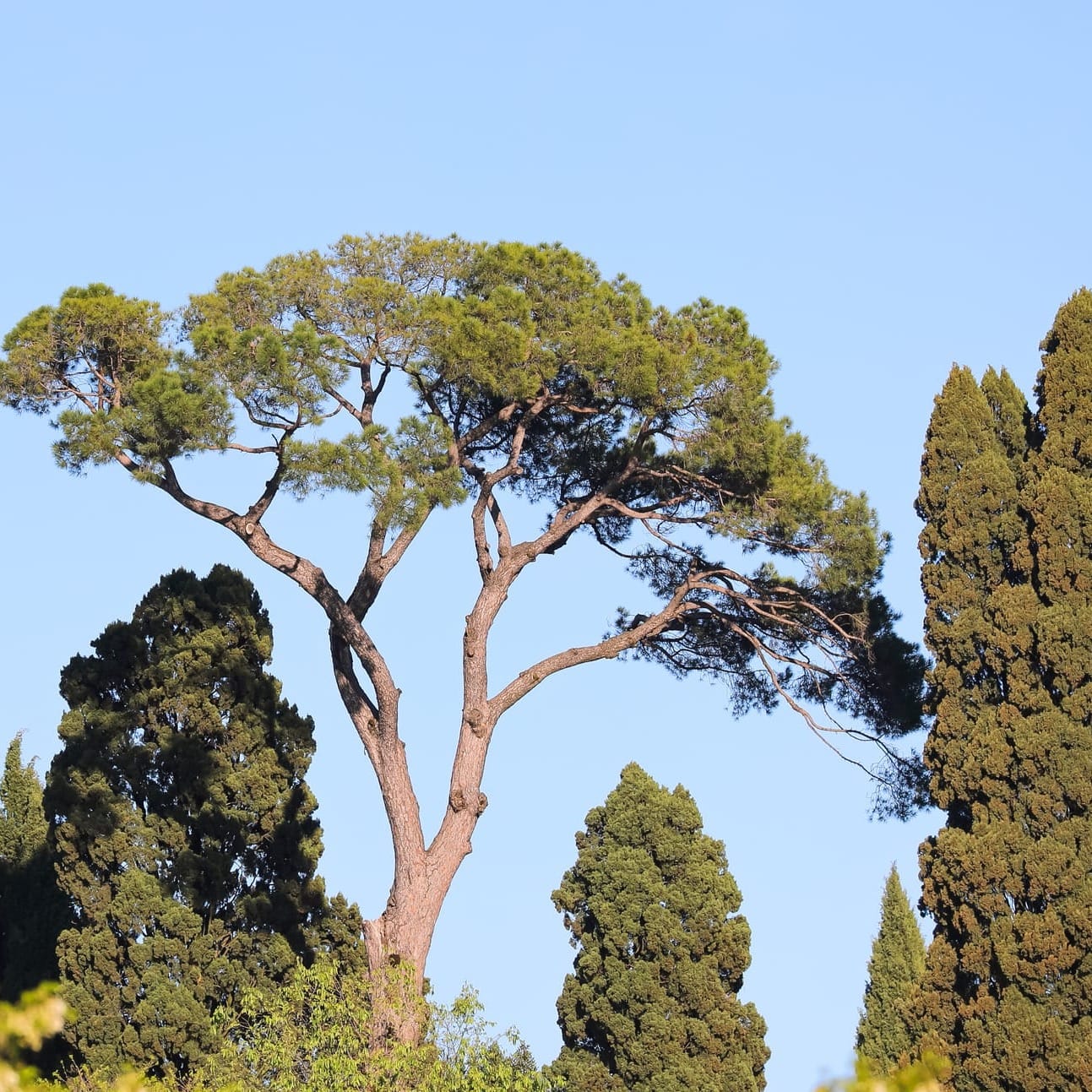
Care Advice
Stone pines thrive in full sun with well-draining, sandy, or rocky soil. They are drought-resistant once mature and require very little maintenance. However, they need space to grow—these trees can reach between 12 to 25 meters in height, with a wide canopy that expands over time.
Cost
Stone pines are moderately priced, with saplings starting around €40–€80. Larger specimens (3m+) can cost €200–€600, depending on maturity. As slow growers, they don’t need much upkeep, but if you want a fully developed umbrella-shaped pine, you might need to invest in a pre-shaped tree, which can be pricier.
Idea #7: The Judas Tree
Native to Southern Europe and the Middle East, this tree has been adorning gardens for centuries with its breathtaking display of deep pink blossoms in early spring. In places like Provence and the Côte d’Azur, Judas trees are often found growing wild along hillsides, their pink flowers creating a spectacular contrast against the blue Mediterranean sky.
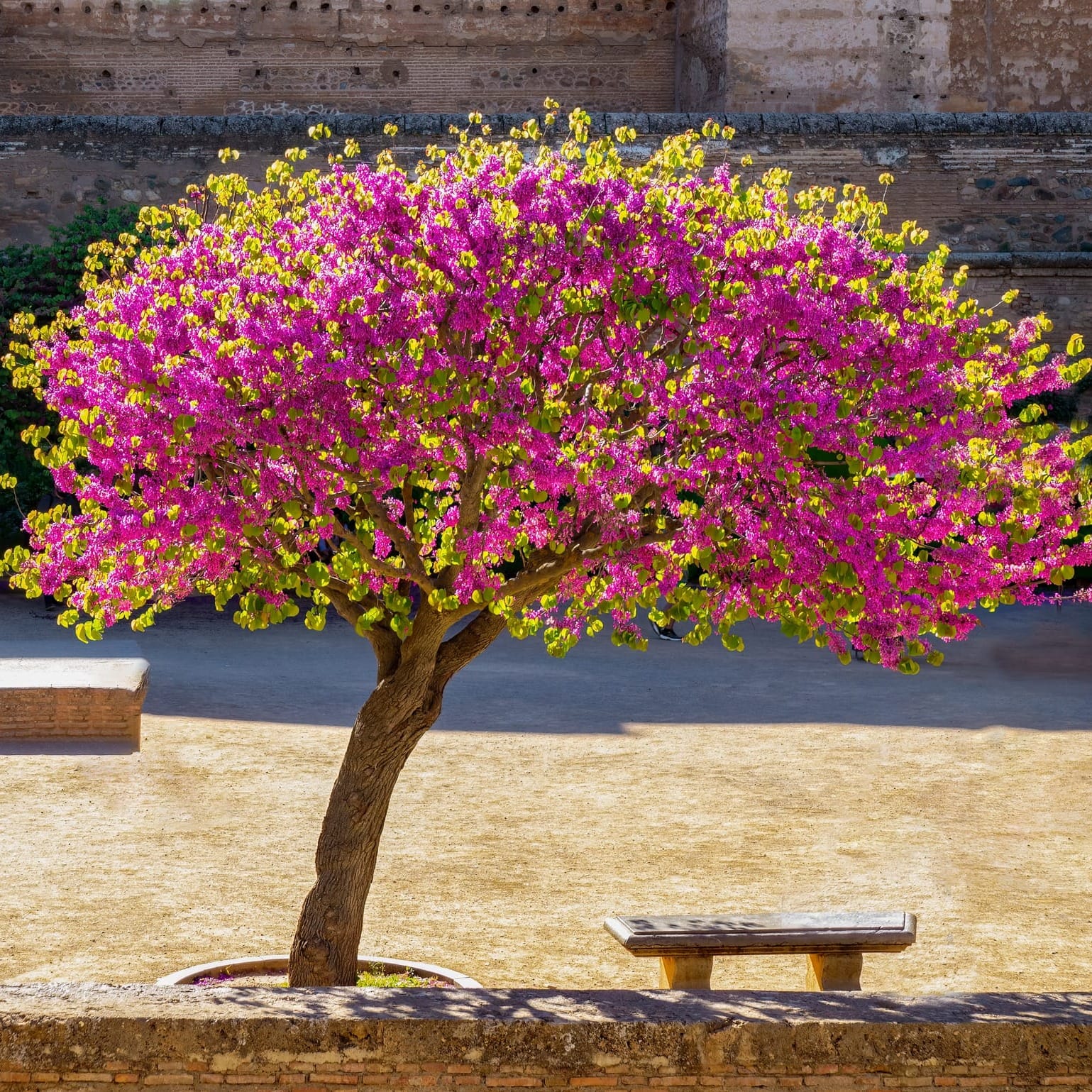
Care Advice
Judas trees thrive in full sun to partial shade and prefer well-draining, slightly alkaline soil. They are drought-tolerant once established and require minimal watering, making them ideal for low-maintenance gardens. Their growth is moderate, reaching around 4 to 10 meters, with a beautifully rounded canopy that provides dappled shade.
Cost
Young trees are available for €30–€70. Mature, flowering trees cost around €150–€400, depending on size.
Idea #8: The Fig Tree
The fig tree is one of the most ancient and symbolic trees of the Mediterranean. Dating back thousands of years, it was cultivated by the Greeks, Romans, and Phoenicians and is often referenced in mythology, religion, and art. Its broad, sculptural leaves and sweet, honey-like fruits make it both a practical and aesthetic addition to any garden.
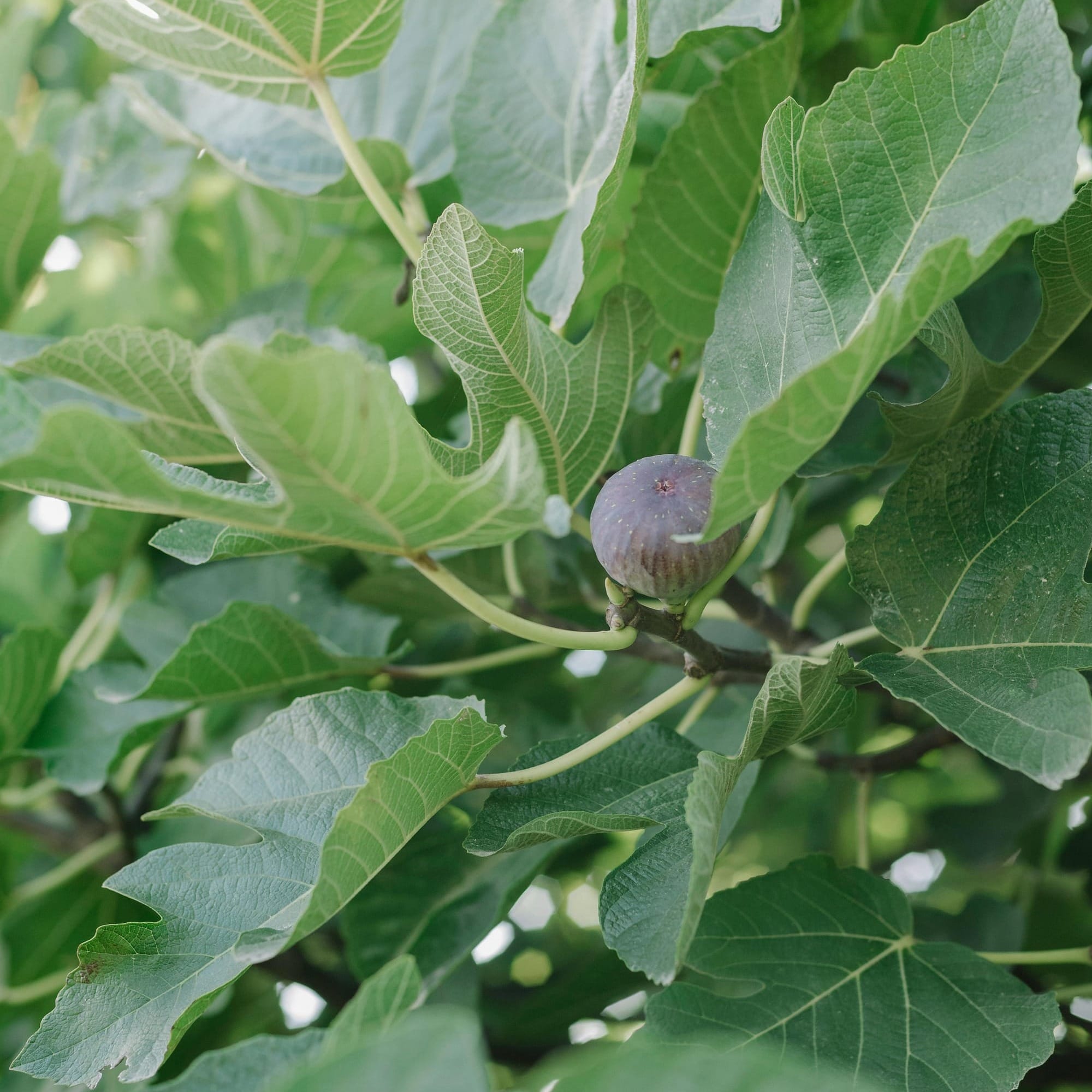
Care Advice
Fig trees love the sun and thrive in warm, dry climates with well-draining soil. They are drought-tolerant, making them perfect for low-maintenance gardens. If you’re in a colder climate, don’t worry—fig trees can be grown in large pots and brought indoors during winter. They typically reach 3 to 10 meters in height, but their size can be easily controlled with pruning.
One thing to note—while their fruit is delicious, their milky sap can be irritating to the skin, so handle with care when pruning.
Cost
Fig trees are affordable and widely available, starting at €30–€80 for a young plant. Larger trees (1.5m+) cost between €150–€500, with rare, ancient specimens exceeding €1,000.
Idea #9: The Carob Tree
The carob tree is one of the most underrated gems of the Mediterranean. Native to the region for thousands of years, it was cultivated by the Ancient Greeks and Romans for its nutrient-rich pods, which were historically used as a natural sweetener before chocolate became popular.
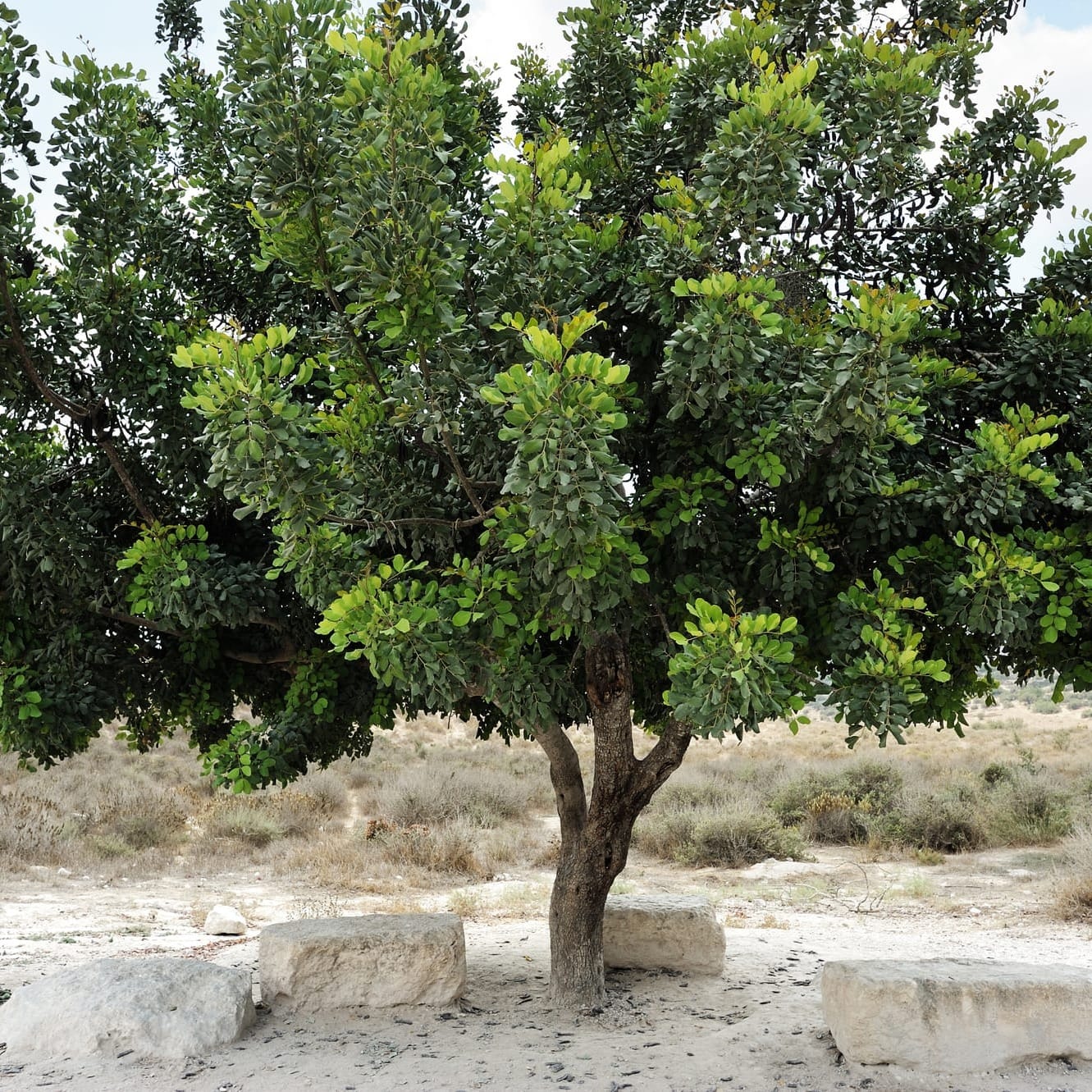
Care Advice
If you want an effortless, low-maintenance tree, the carob is a perfect choice. It thrives in full sun and well-drained, sandy, or rocky soil, making it ideal for dry, Mediterranean-style gardens. This tree requires minimal watering once established. It grows slowly but can reach 10 to 15 meters, though it can be pruned to maintain a more compact shape.
Cost
Carob trees are less common in garden centers, but still available in Mediterranean regions, with small trees priced at €40–€100. Large, mature specimens can range from €200–€800, depending on availability.
More articles
